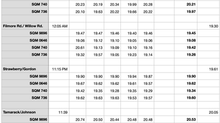Bargmeyer Reflects on Michiana Astronomy
- Chuck Bueter
- Jan 14, 2014
- 4 min read
Bargmeyer Reflects on Michiana Astronomy
Posted by admin on January 14, 2014
As the Michiana Astronomical Society (MAS) celebrates its 40th anniversary, Robert (Bob) Bargmeyer responded to the call for accounts of the early days of local astronomy. The St. Joseph Valley Astronomical Society (SJVAS) existed prior to the MAS, while the MAS itself evolved from the St. Joseph County Astronomical Society that had been formed by students of Mishawaka High School, per MAS treasurer Dan Smith. In Bob's words...
My Riley high school classmate Roland (Terry) Williams and I wrote and published (via high school mimeograph) the SJVAS Monthly Observer while we were students from 1956-1960. We originally wrote the MO on a typewriter, transferred the image to a goopy tray of blue gelatin something or other, then "printed" the final copy by transferring the image on the gel tray to the paper copy. Messy and slow.
I got started in Astronomy as a hobby in grade school at Beiger Elementary ca. 1953. I earned the Astronomy merit badge in the Beiger Boy Scout troop. My family would go to Chicago about once a month to visit my mom's sister in Chicago or her brother in Waukegan. We would always stop at the Adler Planetarium for the show. I used H.A Rey's book "The Stars: A New Way To See Them" to learn the basics. Then one day when bicycling home from a Mishawaka summer park-league softball game, I stopped at the store on Union Street owned by Irma DeBruycker. Turned out Irma was an Astronomy buff and a leader in the SJVAS. This led to my becoming interested in the club's activities. Irma published the SJVAS bulletin (The Monthly Observer) in those days (early 1950s), which I eventually ended up taking over for her. The MO was a 1-2 page news-letter with news of the club's activities, the next monthly Star Party meeting announcement, and observing highlights for the month ahead gleaned from Sky And Telescope magazine. I ended up buying a 4-inch reflector from CritrerionTelescope Co. I can remember oberving a solar eclipse (projected the solar image onto a sheet of paper) from my driveway one summer.
On one of our Chicago trips, I met Frank Goodwin (of Goodwin-Barlow lens fame. His Barlow lens had a variable 2X-3X magnification factor housed in a 4-inch long tube into which you inserted a wooden ruler into to slide the lens forward or back to vary the power magnification). I have fond memories of putting my 167X objective lens into the Goodwin Barlow to get about 500X on the moon. Of course, with no drive mechanism, the moon would traverse the field of view in about 10 seconds! Unfortunately, I sold my scope and the Barlow to a colleage at the Air Force Rocket Propulsion Laboratory about 1965.
Soon after (ca. 1955) when ice skating one cold winter afternoon on a pond located just north of the corner of Ironwood and Ireland Roads, I met Oscar Knab and his son Doug, and somehow we got to talking about star-gazing. Turned out Oscar was an architect who built telescopes as a hobby. So as the winter wore on, I was spending evenings at Oscars observing or watching him grind out a new mirror for a new scope. Oscar's original scope was a jewel of a 6-inch reflector mounted outside his house on a rock-solid pedestal so sturdy that when observing, you could tap the tube smartly and the image would settle down in 2-3 seconds! It's crowning feature was the second secondary in the optical train that allowed him to bring the focal point to a fixed location so that you were always standing in one place and only bending over slightly to oberve the image. The lazy-man's approach to refined star gazing! He would only have to remove the mirror to his house after an observing session. The scope had a weight-driven clock drive and setting circles so he could lock in an object and track it as long as he wanted. Later, Oscar built a beautiful short focus (f 3.5) 8-inch rich-field scope (about 24 inches long) for wide-field viewing of the Milky Way and other rich-field delights. His final project (while I knew him) was a 10-inch Maksutov off-axis scope that used the same pier and drive as his original 6-inch. Oscar had 2 or 3 of his scopes written up in Sky and Telescope over the years.
Our monthly star parties were held at various locations with dark skies. Mr. Matt Taggart had a 16-inch Newtonian we used at his home in the Niles area. The club also had a summer picnic meeting on the shore of Lake Michigan near Michigan City. Oscar's home on Ironwood Road was frequently used.
I would also prepare a meeting announcement for publication in the South Bend Tribune. Mr. Frank Cxxxx (I can't spell his Polish last name), a staff writer for the Tribune and a SJVAS member, would get the announcement published in the club announcements section of the paper.
The only other noteworthy thing I recollect was participating in auroral observations during the International Geophysical Year (IGY) in 1957-1958. I sent in for and received my little altitude protractor and logbook to enter observations of time, direction, color(s), intensity, and shapes of auroras seen from my home on the corner of Ironwood and Ireland Roads.
Thanks, Bob, for sharing this account. If anyone else would like to contribute a story, please send your text and images to Chuck Bueter at bueter@ nightwise .org.








































